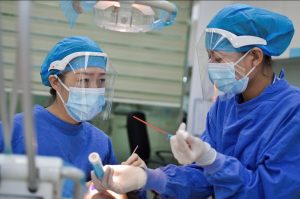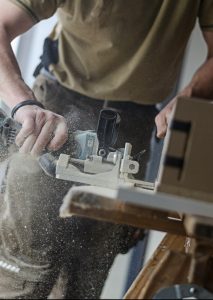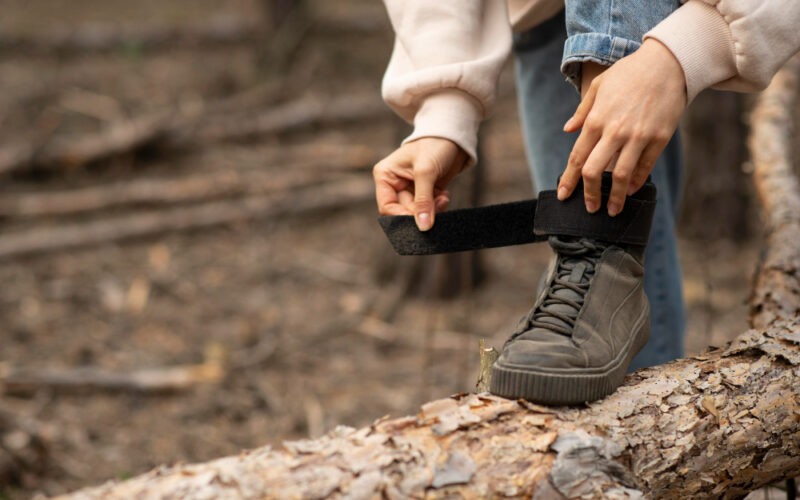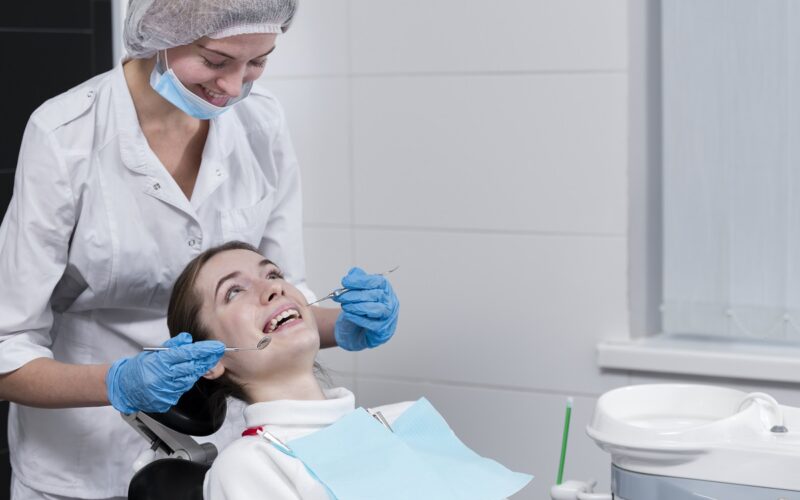
Being a physical therapist and working in this field for years I come across many youngsters complaining about joint and muscle pain. They say that no one is free nowadays and everyone is busy in their life. In this busy work-oriented life young and old everyone is getting affected with some or other types of pain and difficulty in propelling their body for the next sunrise. These problems caused by work is nothing but work-related musculoskeletal disorders in medical terminology. So let’s understand what is it and how to deal with this culprit.
Work-Related Musculoskeletal Disorders (WRMSD) also called repetitive strain injury, cumulative trauma disorder, upper limb syndrome, the cervicobrachial disorder is injuries or disorders of tendon or tendon sheath, muscles, nerves, blood vessels, ligaments, capsule, joints which are initiated precipitated or aggravated with factors associated with work.
When a worker is exposed to the musculoskeletal risk factors.They begin to experience fatigue and when fatigue outruns their body’s recovery system, they develop a
musculoskeletal imbalance however as there’s insufficient time for recovery because of repeated movements WRMSD occurs.
The traumatic injuries of muscle-tendon and nerve resulting from one event because of accidents or falls aren’t considered as WRMSD, but they are a leading cause of work injury claims. Thus an MSK disorder is something related when it’s associated with working equipment, job procedure, and also the environment.
It also occurs when the potential of a person or worker isn’t meeting the duty demands and a performance gap occurs. It is going to occur after weeks, months, or years of job. The symptoms may vary from pain, tenderness, numbness to loss of sensation or paralysis.
Almost all work requires the utilization of hands and arms therefore, WRMSD of hand, wrist, neck, elbow, and shoulder are more common. The work-related MSD of upper limb include carpal tunnel syndrome, tendonitis, tension neck syndrome, epicondylitis, Thoracic outlet syndrome, bodily structure tendonitis, Dequerien syndrome, trigger finger, and digital neuritis.

Risk factors for WRMSD:
Psychological factors
Job dissatisfaction
Job insecurity
Low salary
Poor peer relationship
Pending jobs
Lack of control over one’s job
Boredom
Individual factors
Gender
Age
Smoking
Pregnancy
Comorbid illness
Poor shape level
Poor health habits
Obesity
Diabetes
Ergonomic risk factors
Repetition
Contact stress
Vibration
Forceful contraction
Awkward positioning
Sustained position
Temperature
Lightning
- Characteristics of WRMSD:
Results from overuse:
It occurs when the body performs beyond the body’s recovery capacity or when the structure is repetitively loaded and is created to endure a piece load that it cannot tolerate without negative consequences.
Develops gradually:
The sudden appearance of an injury is termed as work-related musculoskeletal accident and not an MSK injury related to repetitive work. the method elicit gradually with mild discomfort felt initially which progresses with time resulting in a strike. The disorders may take weeks, months, or years to develop.

Has multiple causes:
WRMSD occurs usually from a mix of things and not just one cause if the demanding task is completed in bad posture; even with low repetition, it’ll still cause MSK problems conversely a less demanding task performed in an exceedingly more or less adequate posture can cause damage if it’s repeated several times per day.
Prevention is very effective:
WRMSD develops gradually thus acting as a bonus because unlike accidents tendinitis and bursitis will be anticipated since they develop gradually action can, therefore, be taken to stop further injury. If overuse is stopped in time complete recovery is feasible. The disadvantage is that the individual gets adapted to the pain and feeling of discomfort will getaway. This increases the danger of the situation getting worse to some extent where complete recovery isn’t possible.
- Occupations causing upper extremity WRMSD
Nurses
Truck drivers
Cashier
Construction labours
Carpenters
Computer users or desk jobs

Management
The world health organization divides prevention into 3 categories
- Primary
- Secondary
- Tertiary
Primary prevention:
These are the measures taken to forestall clinical manifestation of a disease before it occurs. Primary preventions are considered as best managements because if proper precautions are taken and principles are followed then the value of the injury, days of labor lost and production of the industry all may be benefitted.
supporting information from the task analysis, an employer can establish procedures to correct or control risk factors by using:
- Appropriate engineering controls, like work station, tool, and equipment design or redesign;
- Work practices, like proper posture
- Administrative controls, like worker rotation, more task variety, and increased rest breaks, and if necessary;
- Personal protective equipment, like wrist cushions, vibration gloves, and similar devices.
In computer workers, proper arm and wrist supports are particularly important to forestall overuse injuries like elbow epicondylitis. For patients with physical impairment, proper positioning and supports are needed, especially for those with poor neuromuscular control and truncal weakness. Proper function positioning of the part involved in handling equipment is crucial.
Secondary prevention
Clinical treatment of the symptoms:
Once the disorder is found and therefore the degree of injury is set, proper treatment must be developed. Successful therapy may require weeks or months. During now the patient’s work activities could also be restricted. an extra strategy could involve limiting movement of the injured area and possible splinting, the appliance of warmth or cold, medication to scale back inflammation and swelling, and special exercise.
If conservative approaches fail, special drugs or surgery could also be required. it’s important that the worker not continue performing the identical job or task that caused the injury. The worker may well be reassigned, or the task should be redesigned.
After alleviating the symptoms, the following goal is to avoid reoccurrence, which is extremely commonly observed.
Tertiary prevention
RETURN TO WORK: work conditioning and work hardening programs.
At the tip of the program, the worker still may not be able to meet all the strain of the task. Hence it’s recommended to change the task that the worker can safely perform or provide an interim transitional job.
Job modifications:
- general varieties of modifications in jobs will be classified-
- Physical accommodations: this list is endless and would differ for every particular work setting. It encompasses not only the particular work station but also includes products that are unique to the individual. In cases where job modification or job restructuring also may not be able to accommodate the worker back to the same wok, vocational rehabilitation may be necessary.
- Environmental adaptations: attention to the impact of the work environment may have on an employee. g: Temperatures either too warm or too cool. Loud noises can be diminished by headsets or acoustic room area closures.
- Worksite modification: site modifications not only to accommodate the worker’s need but also can be beneficial to the entire business.
E.g: Ramps, elevators.
Redesigning work station
Flooring
- Job restructuring:
It may lead to a redesign of a production line or the entire operation or the unit.
Eg: unnecessary task procedures can be identified, Reassigning the tasks to make the greatest use of the individual’s skills result in accommodation as well as an increase inefficiency.
- Work activities modification:
It will be different according to the individual requirements and conditions of the workers. E.g: dividing rest and lunch breaks into frequent shorter periods.
- In cases where job modification or job restructuring also may not be able to accommodate the worker back to the same wok, vocational rehabilitation may be necessary.
Hope this information helps you to recover..!! Stay safe.





